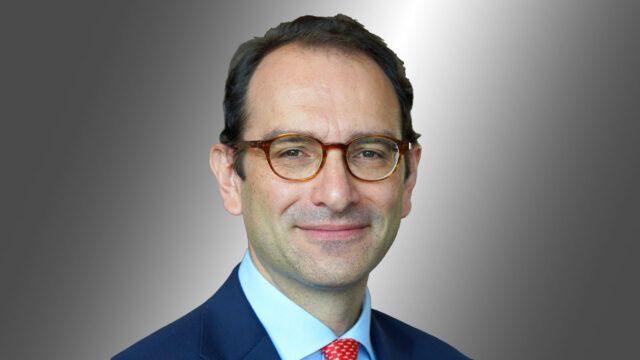Janus Henderson is aiming to double its assets under management (AUM) in the region within five years, its Asia Pacific CEO Andrew Hendry (pictured) told FSA during a recent interview.
Hendry said that the pledge was made in February last year, meaning that he had just under four years to hit the target.
He said that the increase in AUM would come from a combination of market appreciation and gaining market share from their peers.
Asia is one of the eight strategic pillars identified by Ali Dibadj, who was installed as CEO less than two years ago, meaning that the firm was allocating more capital to the region even at a time when other asset managers are retrenching.
“The idea is there is supra-normal above average growth coming from this region, which is no surprise to anyone. We’re punching below our weight. We’re pretty small and modest out of the percentage of total group AUM. And so the idea is let’s really focus on it, let’s get a team on board, let’s put money behind it,” he said.
Different business models
According to its most recent financial statement, Asia Pacific accounted for almost exactly 10% of group AUM at $33.4bn compared with $334.9bn globally, making Janus Henderson mid-sized among the global asset managers.
The firm is fairly narrowly concentrated, being located in just four markets in the region – Australia, Hong Kong, Japan and Singapore – with three very different business models.
In Japan, the firm has a limited presence with only around 30 staff based there as it adopts a sub-advisory model.
In contrast, in Australia, the firm has a much larger presence and is one of the largest fixed-income managers in the country.
Hong Kong and Singapore sit somewhere between the two poles, where they manage most of their businesses elsewhere in the region.
Hendry notes that this tripartite approach has evolved partly due to legacy acquisitions and also the nature of the individual markets. For example, many global asset managers have adopted a sub-advisory model in Japan, where it is difficult to compete head-to-head with the domestic players given their sprawling distribution networks.
China strategy
Conspicuous by its absence in the list of countries Janus Henderson has a presence in is mainland China. It seems as if barely a week goes by without another asset manager announcing a new China strategy, whether it’s a product launch or a new licence that has been approved.
The holy grail for most asset managers is to operate as a wholly foreign-owned public fund management company (FMC) in mainland China, which allows them to tap the country’s vast retail investor pool.
Only last week, Allianz Global Investors became the latest asset manager to get the go-ahead to launch a wholly-owned FMC.
However, many foreign firms that have already been given the green light have struggled to gain much traction and for Hendry, it would serve as a distraction currently.
“For the retail business in China, we are not at the size that allows us to do it successfully. That will be a distraction for us. I know we will fail because I’ve done China before in previous roles,” he said.
“We don’t have the scale to be able to succeed in China. Indeed, some of our peers that are much bigger haven’t succeeded in China. On the other hand, we have been successful with China institutional business.”
Headcount
In terms of headcount, the firm has been steadily growing its ranks, particularly in distribution, although the most recent notable hire was in its investment team with Victoria Mio joining as head of greater China equities.
Hendry said that the firm has largely finished recruiting for the time being and that the focus now was on increasing the amount of business it does with the largest institutional investors and intermediaries.
“Headcount’s already done. If we were having this conversation last year, I’d be telling you, we’re going to hire eight people here and we’re going to hire investment specialists, we’re going to reinforce the investment team, etc. That’s all done. That’s what kept me busy for most of last year,” he said.
Hendry concedes that Janus Henderson’s strategy is fairly straightforward insofar as the group is targeting a bigger share of wallet from the largest investors in the region.
“The simplistic approach for me for getting from now to the end of that five-year period and doubling assets is I need people to give us money and retain money with us. And guess what? The biggest pots of money within the intermediary channel and the institutional channel, there’s no prizes for guessing who they are. They’re not hidden in Thailand or the Philippines. These are the biggest global banks and biggest sovereign wealth funds,” he said.
Consistent execution
However, the concern is that Janus Henderson’s strategy is not too different from most other asset managers in the region, so making sure that the firm is able to stand out among its peers is no easy feat.
The firm has struggled globally to retain assets and suffered outflows for every single quarter since the tie-up between Janus Capital and Henderson Global Investors in 2017 until the first quarter of last year.
According to Hendry, Janus Henderson is starting to benefit from its consistent engagement with clients, notably due to the fact that at a time when most other asset managers have been retrenching, it has steadfastly refused to do so.
“What happened last year is a lot of asset managers pulled back. This year is a dead year. There’s no flows. Everyone’s putting money into time deposits. The idea is this year’s a lost year. Let’s just retract, which is what a lot of our peers did,” he said.
“Thanks to the fact we’re part of this global strategic initiative, I had a big pot of money and so while others were pulling back, we consistently supported a whole bunch of our clients. Did we make any money off that? No, because the flows weren’t there. But what it did do is it allowed us to demonstrate what we mean by consistent execution. Come rain or shine, we’re going to come and support you.”
Merger troubles
Any discussion about Janus Henderson inevitably turns to talk about the merger. When the merger was touted in 2016, it was viewed as a transformative deal for two mid-sized asset managers that would otherwise struggle to remain relevant globally.
It was also viewed as potentially synergistic, helping London-based Henderson, which had grown following several boutique acquisitions in Europe, gain a foothold in the US and vice versa for Janus.
The consensus is that the merger has not really worked as Janus Henderson has struggled both in terms of revenue and share price since then. Although, in fairness to Janus Henderson, this is at least in part due to circumstances afflicting nearly every asset manager, namely the shift away from active management.
Hendry’s tenure at Janus Henderson (he only joined the firm two years ago) means he is not particularly well-suited to comment on some of the problems with the merger, although he notes that this is no longer a question that comes up when meeting with clients.
“I see approximately 300 to 400 clients a year. When I first joined, that was the question: What about the merger? After a year into my stint here, no one asks about the merger. Nothing. I don’t want to say I’ve drawn a line on it because that was not my history. I was at Aberdeen. But what’s very pleasant to me is that the conversation has shifted from what’s happened to the merger to the clients themselves drawing a very bold line under it. They just don’t talk about it,” he said.

















